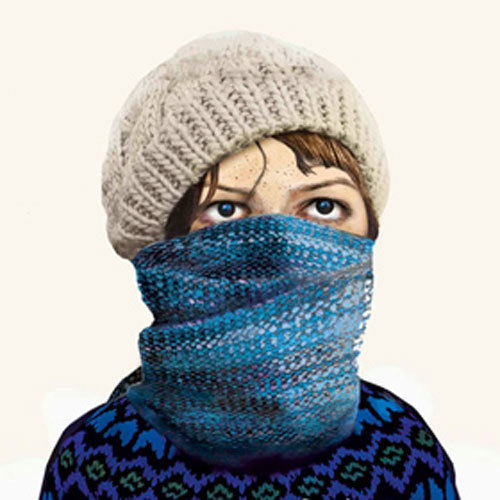< Back to posts
Stian Hole
Norway

Stian Hole is a Norwegian graphic designer, illustrator and author. He’s created numerous book covers and five picturebooks which have received national and international recognition. For ‘Garmann’s Summer’, Stian won an Ezra Jack Keats New Writer Award, the German Children's Literature Award and a Bologna Ragazzi Award.
In this post, Stian shares some striking artwork from ‘Morkel's Alphabet’, his forthcoming picturebook with Cappelen Damm. He also shares some fascinating insights into the art of picturebook making, which he wrote down during the creation of this book.
Stian: Thank you for your hard work in running this blog. Thanks also to all of my fantastic colleagues who so generously share their experience and working processes. Reading through these posts gives me so many new ideas.
As I write this, I'm in the final stages of creating a new picture book, ‘Morkel's Alphabet’, which will soon be sent to print.
I've been working on the story for two years now, making notes throughout the entire process. I used to use notebooks, but nowadays I tend to note things down using my iPhone, which is always in my pocket. It's a practical solution, particularly since ideas and connections often emerge at the strangest times and in the funniest places! I've gone back through these entries, and what follows are some of those notes, ever-so-slightly edited and in the following order:
The picture book becomes a space between incidental discovery and educated understanding, between the viewpoint of an adult and that of a child. It's a space of interaction between the right and left halves of the brain, a space that sparks dialogue between the brain and the heart, between play and perseverance. A space for doubt, curiosity and fragility, because something feels important. Between memories and dreams, longing and wonder. The picture book becomes a place where words and images need one another and interact with one another, yet aren't required to say the same thing.
Creating picture books is about seeing the world from two viewpoints at the same time: as an adult and simultaneously as a child.
You can be a child as an adult too. Like Picasso.
Listen to your heart. Engage with the vulnerability and doubt you find there. Trust your feelings and keep any intellectual tendencies at bay. Don't stop yourself.
Creating a story is about making a series of logical and poetic decisions.
Consider the devices you use as if they were pieces in a board game. Try to observe and understand the rules of that game. What's at play in the story?
Are you able to see whether the story has its own alphabet, its own grammatical rules? Can you see the possibilities that exist within? What is it that exists there, under the surface?
Be present. Be alert. Aim for the same kind of concentration that children have when they play.
Can you see the way in which almost everything resembles something else?
Clichés are your friends, but it often helps to remove them later on in the process - it liberates the story.
Make room for the reader's collaborative role. Only the reader can bring the ideas that represent the breath of life that the story needs.
Try to minimise distance. The distance between yourself and what you are creating, but also the distance between the story and the reader.
Is there a sense of hope, a seed within the story that can sprout and grow on the story's own terms?
Rearrange, condense, refine and distill. Use contrasts to create twists and turns and a dynamic feel to the story – a sense of progress and surprise.
Can you see what your picture book resembles? It's a little like a theatre play where you see one thing, hear another and understand something entirely different.

Be mindful of everything you come up with during the working progress, including the things you don't really think belong. Regardless of whether they're right for the text, they succeeded in arousing your curiosity and they may well come in useful at a later date.
Keep going. Have patience and perseverance, and be sure to spend time deeply immersed in the story. Make use of your senses and try to view things afresh, several times over if possible. Can something be cut differently? Try to turn the elements on their head, removing and adding as you see fit. Imagine you are seeing things for the first time from the viewpoint of a child. Be alert and keep an eye out for coincidental elements that occur along the way.
Beware of asking others what they think about your work. Be your own reader and trust yourself. Don't be afraid to engage with doubt: it can be a powerful motivating force.

Steal from the best. Make everything your own.
Beware of doing again what you already know you can do.
Get up early and work hard every day.
Read poetry.
Only ever drink good, freshly-ground coffee.
Keep the publishers and the alcohol they serve at arm's length: remember how the Indians lost their land.
Give your wife short updates every day.
Oh, and don't forget to stroke the cat.
Illustrations © Stian Hole. Post translation by Rosie Hedger.
Morkel's Alphabet
Stian Hole
Cappelen Damm, Norway, 2015
Morkel is in his cabin in the woods when Anna finds him. They are both very interested in words and letters. "Everyone has their own alphabet," thinks Anna, "but it can take a long time to figure out the letters."
One day, Morkel disappears. Anna longs to see him again. Maybe he'll return to her in the spring? Like the birds that he loves.
A beautiful story about friendship and what's important in life, from one of Norway's greatest picturebook makers.




